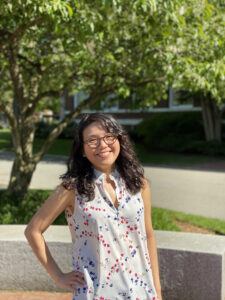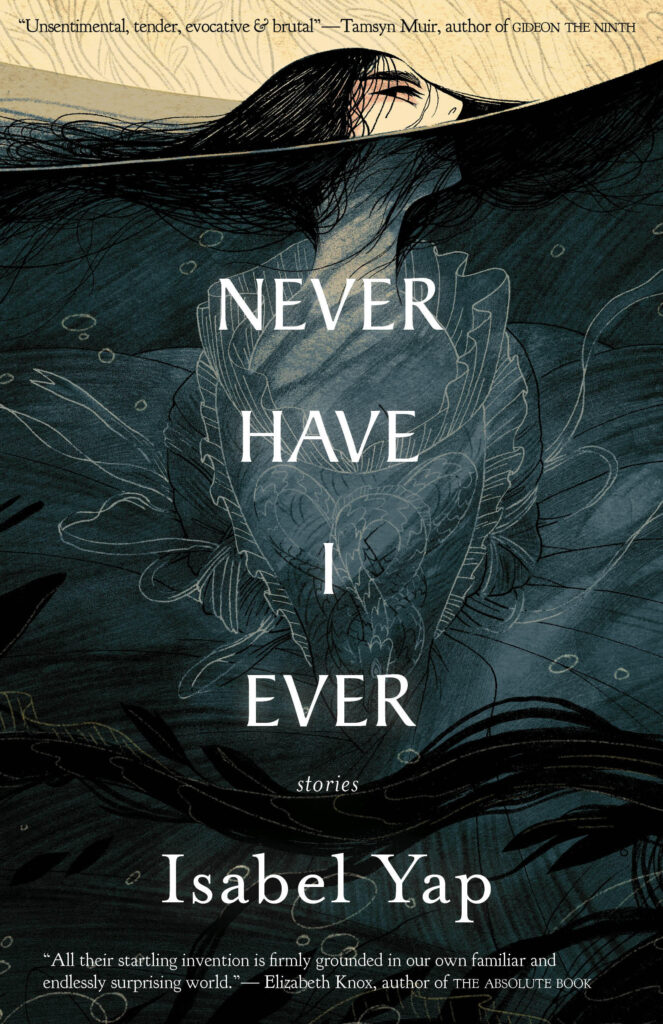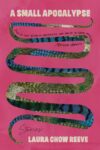 In her debut story collection Never Have I Ever, Isabel Yap has crafted an entire universe predicated on Filipino culture, history, and mythology. She brings to the page everything from urban legends to the unique challenges of online dating. These thirteen stories breathe life into elegy while weaving magic and monsters into the contemporary horrors of everyday life. I had the privilege of speaking with Yap over email to discuss her approach to writing nested stories, the Filipino folklore she grew up reading, and how her tech day job influences her fiction, among other things.
In her debut story collection Never Have I Ever, Isabel Yap has crafted an entire universe predicated on Filipino culture, history, and mythology. She brings to the page everything from urban legends to the unique challenges of online dating. These thirteen stories breathe life into elegy while weaving magic and monsters into the contemporary horrors of everyday life. I had the privilege of speaking with Yap over email to discuss her approach to writing nested stories, the Filipino folklore she grew up reading, and how her tech day job influences her fiction, among other things.
Megan Kakimoto: I’m so taken by the creative experimentation of your work, and how you incorporate magic, myth, and storytelling into more familiar landscapes while never sacrificing what feels to be at the heart of these stories: that is, Filipino narratives. It feels like such a delicate and impressive balancing act. How do you see these diverse interests coalescing?
Isabel Yap: Thank you for the kind words! I actually feel like all the magical elements blending with real life is very representative of Filipino culture, so it came through pretty naturally for me. We’re a people that believes in the supernatural . . . except that sounds more dramatic than it is in our everyday lives. Like, I can have a conversation with people about white ladies or duwende, and it’ll be taken at face value. I really did have a teacher in elementary school that told us about her third eye. Part of my research for Only Unclench Your Hand was asking my manong if he’d ever encountered a mambabarang, and he was able to tell me about a secondhand experience. Are these instances magic? Are they myths? To us, they’re just part of life.
I admire the way Filipino and Japanese culture is integrated into each of your stories, whether foregrounded or backgrounded. I especially appreciate the fact that specific cultural details (from the Binukot to the Kappa, a mythological creature I grew up hearing about from my own grandparents) are never glossed for readers. This seems to me to be a deliberate choice. How important is the question of audience for you and your work?
I think it’s impossible not to care about audience, at least for a writer seeking publication. It’s a deeply important part of the work. I write stories for me, but I also write them because I want to reach people. And I want to reach whoever might enjoy my stories; I do want a broad audience. But the audience that I’m most desperate to do right by are Filipinos, specifically Filipino students, or readers and writers, who haven’t really had a chance to see themselves reflected in fiction. I’m particularly sensitive to what people from Manila will think, because so many of my stories are set in Manila, and I really hope that at least some of my rendering feels accurate.
That said, I try to avoid being overly conscious of audience while I’m drafting, or even doing revisions. Otherwise, I start overthinking things and self-censoring, because I feel inadequate to everything I’m trying to write about. I need to allow these fears and anxieties and genuine feelings into my work, because if I don’t, it’ll become inauthentic. And authenticity is something I value highly in everything, but especially in storytelling, because if I’m going to ask a reader for their time I want it to at least be for something honest, and real.
Throughout the collection, we are introduced to characters who are inextricably linked to magic, and vice versa. What interests you in the magical realm of storytelling? Is there a Filipino tradition of the magical and mystical that you find yourself writing into?
I feel like this is a pretty tricky question because there’s Filipino traditions in the sense of being from-the-Philippines, but like many other cultures – and I know you know this, because you come from Hawaii – the Philippines is an archipelago with many subcultures and folk traditions that only sometimes overlap. So it’s not a monolith. I mean, the same is true of the US, there’s no one American culture.
In the Filipino folklore I read growing up, the myths and legends and fairytales were collected from various traditions and regions. (If you’re curious, you can find some of them at Arkipelago books – Why the Piña Has a Hundred Eyes, The Girl Who Turned Into a Fish, etc.) It was only later on that I realized they had different sources. My grandparents are from Tarlac, Ilocos, and Rizal, but I was born and raised in Manila, so I’m distanced from my provincial roots. There are myths and magic systems and monsters from all over the Philippines that I’m unfamiliar with, so when I write them, I also need to research.
I can’t talk about magical storytelling without also acknowledging the massive influence of anime/manga and JRPGs on my work. Growing up, I didn’t read or watch a lot of Western sci-fi or fantasy. But I watched animes dubbed in Tagalog (then later dubbed in English, then later subbed) through most of my life. My siblings and I got a PSX when I was seven, and games like Final Fantasy VII and Threads of Fate and Thousand Arms were very formative for me.
In these stories, everyone had cool powers and cool weapons, and nothing was off-limits. You could have ninjas and spaceships and ghosts in the same property, and have silly onsen episodes next to massive battle arcs where characters died with blood dramatically spurting from their mouths. These influences powered my imagination, and they still inform a lot of the storytelling choices in my work, even if it might not be overt. (Though I guess it’s quite overt in “Hurricane Heels.”)
There is an abundance of storytelling that’s nested within each individual story, like the series of superstitious tales in “Have You Heard the One About Anamaria Marquez?” What about this nested style of storytelling resonates with you?
I’m actually not sure why, but I do really love nested stories. I love braided storylines. Basically I like unusual structures in narrative, but I appreciate them better when they have some underlying pattern, which is why I use parallels or alternating viewpoints a lot. I suspect I like to write this type of story because it gives my brain a little project, a little side problem, to deal with, as I’m working on the story. I don’t plan my stories much – I wish I could, but so far it’s not a method that works for me – so having a kind of frame helps me keep things moving, gives me some constraint to play with.
As for why I like it as a reader . . . it does seem to light up the part of my brain that has always loved fairytales and folktales. Stories with storytelling as an overt part of the effect. A lot of my favorite writers do this too – Diana Wynne Jones, Sofia Samatar, Helen Oyeyemi, among others. I was recently reading Matthew Salesses’s 25 Essential Notes on Craft, and he makes a case for how craft is “made by culture and reflects culture,” and how some cultures are much more about repetitions and digressions, or framed structures, or the cadences of street talk and gossip. That rang true for me. Maybe a love of nested storytelling is hardwired into my blood.
Tech and pop culture references pervade this collection. We have Patrick working at a tech start-up in SF. We have Ariana Grande and hashtags in “Asphalt, River, Mother, Child.” We even have technology replacing doctors and caregivers in “Syringe.” How do you see social media, pop culture and technology working within the collection?
I work in technology for my day job, so that was an easy way for me to develop an authentic workplace setting. I actually wrote the first draft of “A Spell for Foolish Hearts” shortly after leaving the start-up I’d worked at for almost five years, so all of my memories and feelings were top of mind. My tech start-up life dominated my twenties, so it felt natural to make it part of my San Francisco story, because tech pervades so much of that city.
Social media plays a critical role in “Asphalt” because Filipinos love social media. We’re one of the top social media users on every platform. Filipinos spend an average of 4 hours 15 minutes on social media every day – the highest in the world. (There’s an episode of Startup by Gimlet Media that talks about how Filipinos basically killed Friendster by using it so much that it tanked their servers.) Social media is inescapable from a conversation about Rodrigo Duterte’s regime, because Facebook was used to mobilize and weaponize our politics, much like it has been in the US and elsewhere in the world. Romuel, in this story, is based on a real Filipino boy: Kian de los Santos, whose death became a hashtag on social media.
I know there are some dated references in the book. In “Hurricane Heels” they mention a hard drive with a bootleg Netflix series, because I wrote that story before everyone was streaming (if we can remember that time). Cely plays with a Nintendo DS in “All the Best of Dark and Bright.” I think it’s nice to have them there, maybe as a curious thing for future readers. When I first started publishing I would sometimes get editorial comments advising me not to leave in references that could date the manuscript, which is a comment I’m open to, but generally I don’t worry too much about it now. I think if the references are true to the piece and the characters, that’s what matters.
In “Good Girls,” readers are introduced to the Bakersfield Good Girl Reformation Retreat, where girls are taught to be good (or at least expected to try). In “How to Swallow the Moon,” we’re similarly confronted with the ideas of how girls are expected to behave, and what girls are allowed to want. What drives you to explore these territories that are portrayed as taboo or beyond a girl’s reach?
In the last few years I’ve sometimes summarized my writing interests as “girls and monsters,” which is pretty accurate, especially for my short fiction. It’s personally interesting to me, because although I was quite girly as a kindergartner, after I entered elementary school I wasn’t girly at all. Or at least, I’ve never felt girly, and I don’t . . . act girly . . . or exist in a girly way. As far as I know.
This has persisted even into adulthood, where I feel slightly out of place when things are too feminized. Like, I consider myself a feminist, but in my MBA program I definitely didn’t feel super attuned to this idea of being a strong, powerful, woman leader that often surfaced – for very good reasons! – in class. So I think my interest in writing about girls comes specifically from a desire to interrogate what the term girl even means. I do think there’s something to the word girl, and not woman, that I find compelling – maybe it’s this millennial Peter Pan thing, where we don’t really outgrow the hobbies that shaped our childhood. Because all those things are so accessible still, or so mainstream: the internet, fandom, so on. It puts us in an extended childhood, and for women, maybe an extended girlhood. (I’m aware this is precisely why Gen Z makes fun of us millennials.)
To be honest, like most other things that have to do with why I write what I write, it isn’t deliberate on my part. I think I end up exploring this theme simply because I identify as female. When you’re female, the world just doesn’t let you forget that. The world often insists on defining you through that. Gender equity in the workplace isn’t bad in the Philippines in the higher social classes – so it surprised me when I started to work in Silicon Valley and got exposure to sexism and harassment. I felt like up until that point I’d been recognized by my academic success or my work ethic, so to step into an environment and realize I was being judged as a tiny, Asian, female person utterly confused me. That wasn’t necessarily the start of things, but it was a big eye-opener. It made me think oh, shit, things aren’t even. From my salary negotiations to my ability to walk home alone at night in San Francisco, I started to notice when being in a female body made life very fraught.
That got me thinking about all the different ways societal pressure, cultural traditions, and external expectations both real and imagined play into how women in society act. It made me remember the girls in my Philippine legends that turned into pineapples and bananas. It made me recall how much we were inadvertently taught to be ashamed of ourselves as schoolgirls, how we couldn’t talk freely about so many things. It made me think about the magical girl trope and how these battle princesses get clobbered week after week after week. How do we bear it and why? It’s a theme that provides so much room for exploration – though the exploration can sometimes be harrowing.
Reading these stories, I was struck by the tonal scope of your work, and the many notes you’re able to hit not only within the collection, but in each individual story. Do you set out to accomplish a specific tone, or does it come through as the story is formed?
I’m not really sure what I’ll get when I start a story, but I do usually have at least one thing in hand. Sometimes it’ll be a central idea, or a character, or a specific line I really want to write. And sometimes it will be a sense of tone, as in: I want this to sound rich and mythical, or, I want this to be eerie but also funny. It’s not usually defined so explicitly. It’s kinda like a tuning fork in my brain as I go about trying to write the story; it’s very touchy-feely. Either the lines are ringing, working, or they’re not.
I can go through a lot of false starts before the tone connects with the prose, which in turn connects with the other story elements. I tend to write linearly so that means it can be very slow going at the start, but once I’ve wrapped my head around the right tone a lot of things get easier. Then it becomes more of a challenge to hold it together until I get to the end, then it’s making sure there’s nothing discordant while I’m revising, unless I think discordance is part of the effect.

Never Have I Ever: Stories
By Isabel Yap
Small Beer Press
February 23, 2021
Megan Kakimoto is a short fiction writer based in Honolulu, Hawaiʻi. She is currently a Fiction Fellow at the Michener Center for Writers. Her work has been featured or is forthcoming in Boulevard, Conjunctions, Joyland,and elsewhere. Follow her on Twitter @megankakimoto.
This post may contain affiliate links.







